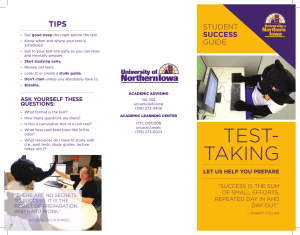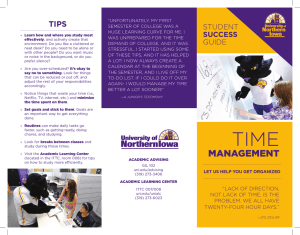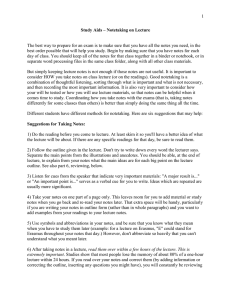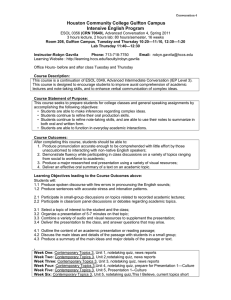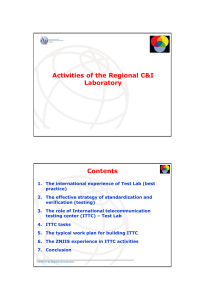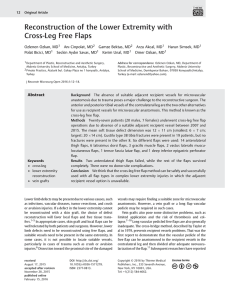TIPS STUDENT GUIDE SUCCESS
advertisement
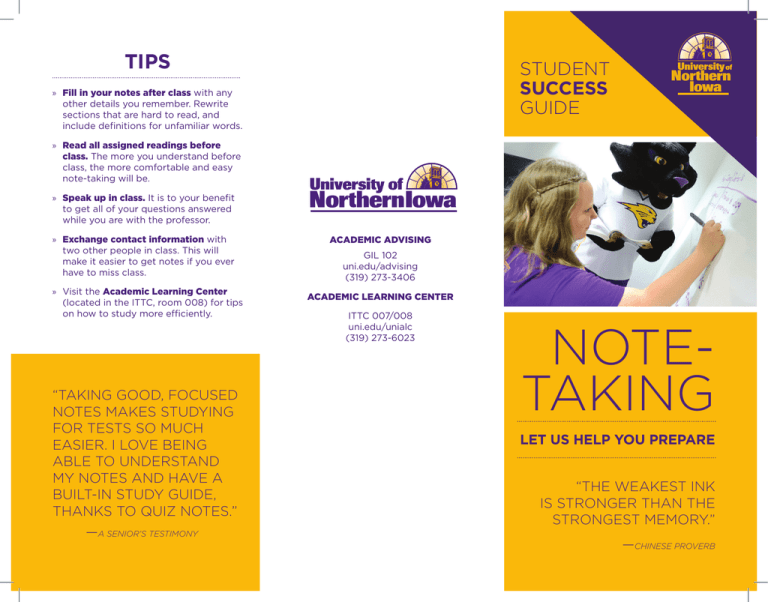
TIPS STUDENT SUCCESS GUIDE »» Fill in your notes after class with any other details you remember. Rewrite sections that are hard to read, and include definitions for unfamiliar words. »» Read all assigned readings before class. The more you understand before class, the more comfortable and easy note-taking will be. »» Speak up in class. It is to your benefit to get all of your questions answered while you are with the professor. »» Exchange contact information with two other people in class. This will make it easier to get notes if you ever have to miss class. »» Visit the Academic Learning Center (located in the ITTC, room 008) for tips on how to study more efficiently. “TAKING GOOD, FOCUSED NOTES MAKES STUDYING FOR TESTS SO MUCH EASIER. I LOVE BEING ABLE TO UNDERSTAND MY NOTES AND HAVE A BUILT-IN STUDY GUIDE, THANKS TO QUIZ NOTES.” —A SENIOR’S TESTIMONY ACADEMIC ADVISING GIL 102 uni.edu/advising (319) 273-3406 ACADEMIC LEARNING CENTER ITTC 007/008 uni.edu/unialc (319) 273-6023 NOTETAKING LET US HELP YOU PREPARE “THE WEAKEST INK IS STRONGER THAN THE STRONGEST MEMORY.” —CHINESE PROVERB QUIZ NOTES Quiz notes are an easy way to focus on the main ideas and create a study guide simultaneously. Fold your paper so you have a crease separating the left third of the paper from the right 2/3 of the paper. The crease is the line you see between Sections B and C. BEFORE CLASS: » Read all required materials. » Print any visuals, graphics, slides, etc. » Bring all materials: pens, notebooks, textbooks, etc. » Sit near the front of the classroom, or close to the middle. A B AFTER 2 WEEKS, WE TEND TO REMEMBER ONLY 20% OF WHAT WE HEAR AND 30% OF WHAT WE SEE. TAKE QUICKER NOTES C DURING CLASS: » Take notes in an outline form. » Don’t write every word the professor says Use symbols during class to write quicker Here are some examples: =, +, -, <, >, w/o, w/, b/c, -->, etc. Be sure you know what they mean! in your notes. » Focus on things the professor repeats, TEMPLATE GUIDE: Section A: Date and title your notes here to stay organized. Section B: List the main ideas from the lecture or textbook. louder or slower speech, and phrases such as the main point. » Don’t let yourself become distracted. » Ask questions if you don’t understand. The purpose of folding the paper is to cover up the main ideas. Seeing if you can answer the question without using your notes is a good way to test your memory and understanding. » Think critically about which notetaking style you prefer: Notebook, laptop, or tablet. » How do you currently organize your notes? Does it work for you? » How can you adjust your note-taking skills to improve your efficiency? Section C: Write notes that support the ideas recorded in section B. After class, review your notes. By re-folding your paper along the line between Sections B and C, you can write test questions on the empty flap about the main ideas you included in Section B. DIGITAL NOTES AFTER CLASS: » Review your notes within 24 hours. » Rewrite things you don’t understand. » Compare your lecture notes with your textbook notes. » Meet with the professor if you are confused or concerned. » Where are you going to take notes on your device? (App, Word, Google Drive, etc.) » How will you organize the notes on your device? » Pick one form of notes per class and stick with it. » If you prefer using a device, make sure you have permission from your professor to utilize it during class.
